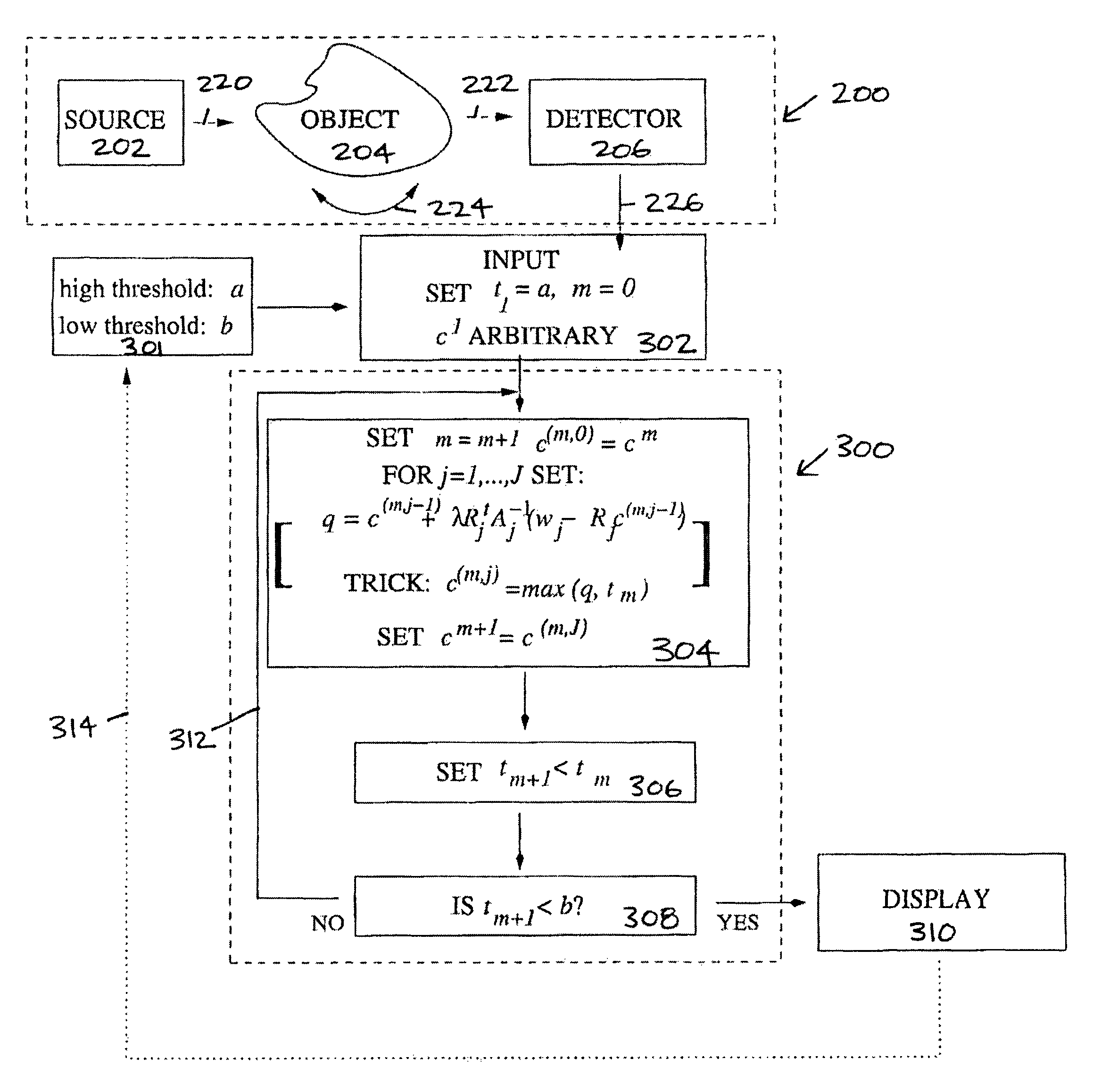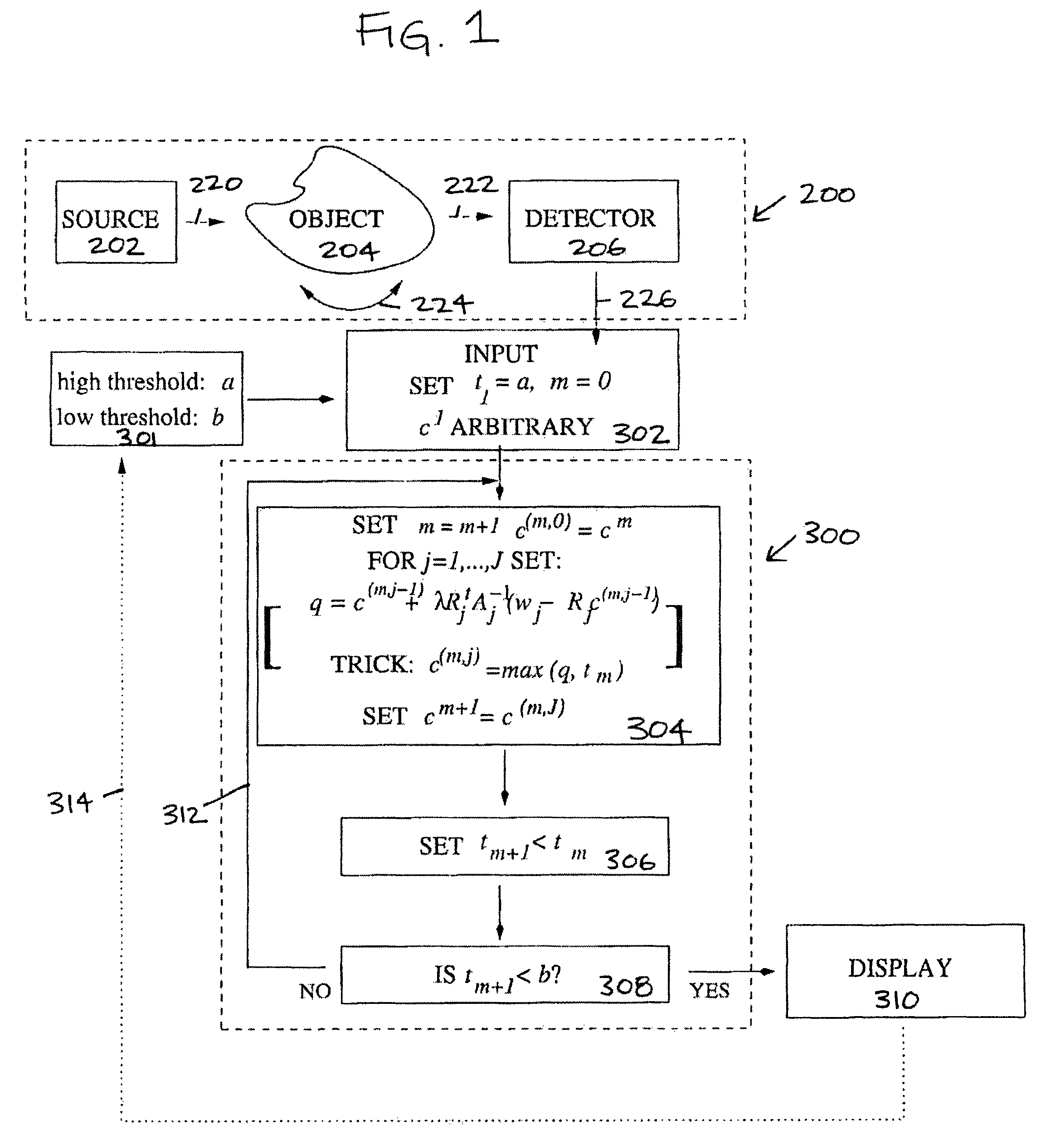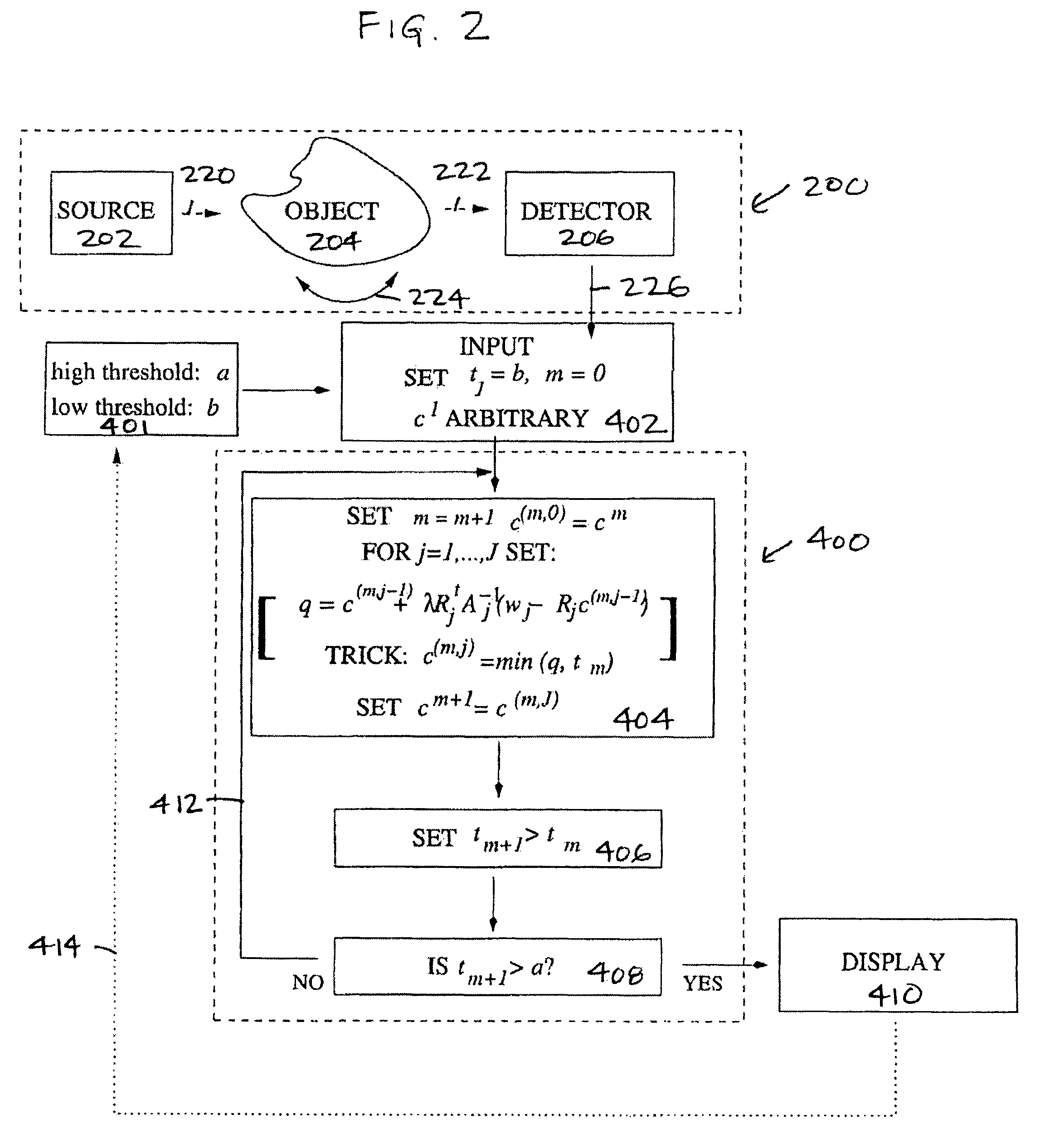System and methods for tomography image reconstruction
a tomography and image reconstruction technology, applied in the field of tomography, can solve the problems of inexactness, error resultant artifacts, and sparse sampling of projection data, and achieve the effect of reducing or eliminating artifacts within images and improving image quality and accuracy
- Summary
- Abstract
- Description
- Claims
- Application Information
AI Technical Summary
Benefits of technology
Problems solved by technology
Method used
Image
Examples
Embodiment Construction
[0038]Although the present invention is discussed in reference to 2D images, it is equally applicable to reconstructing 3D images. The present invention is discussed below with respect to a selected algebraic reconstruction technique (ART), but it is contemplated the present invention can be utilized with any ART algorithm.
[0039]FIG. 1 illustrates a flow chart of a system and method of a transmission computed tomography algorithm according to the present invention. If the object has higher densities than the surrounding medium, in general the reconstructed values are set to be greater than or equal to a current threshold t, which is slowly decreased during the run.
[0040]A tomograph 200 includes a source 202, object 204 and detector 206. Source 202 emits one or more beams 220 toward the object 204, which can rotate 224 with respect to the direction of the beams 220. Beams include, for example, X-rays, electrons, neutrons, microwaves.
[0041]The beams 220 emitted toward the object 204 i...
PUM
 Login to View More
Login to View More Abstract
Description
Claims
Application Information
 Login to View More
Login to View More - R&D
- Intellectual Property
- Life Sciences
- Materials
- Tech Scout
- Unparalleled Data Quality
- Higher Quality Content
- 60% Fewer Hallucinations
Browse by: Latest US Patents, China's latest patents, Technical Efficacy Thesaurus, Application Domain, Technology Topic, Popular Technical Reports.
© 2025 PatSnap. All rights reserved.Legal|Privacy policy|Modern Slavery Act Transparency Statement|Sitemap|About US| Contact US: help@patsnap.com



